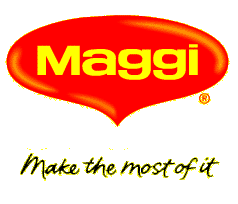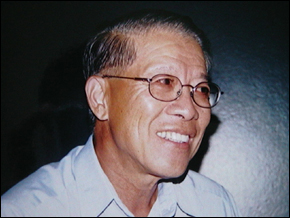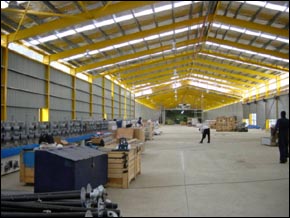 GARMENT
AND FOOD LEADING MANUFACTURING EXPORTS GARMENT
AND FOOD LEADING MANUFACTURING EXPORTS |
Garment and food products are two key merchandise
in Fiji's manufacturing sector. Textile, Clothing
and Footwear (TCF) exports was actually a late-comer,
its quick evolution into a leading export commodity
came after Fiji suffered its first coup in 1987.
Faced with a shrinking economy and devastating trade
bans from Australia and New Zealand, Fiji looked
frantically for a good and reliable source of foreign
exchange to help bring about speedy economic revival.
The tax-free zone and tax-free factory concept was
therefore born in which exporters enjoy, among other
incentives, a 13-year tax holiday. TCF was a key
user of tax concession given Fiji's low labour costs
and lucrative trade deals with Australia, New Zealand,
the United States and the European Union. That 13-year
tax holiday is now expiring for many garment manufacturers
and quite a number have closed shop, lay off workers
and relocate their operations to Asia mainly, drawn
undoubtedly by that continent's cheap labour prices.
But majority of the operators have remained as could
be seen by the gross earnings figures of 2001 in
which garments was secondly only to tourism as being
the largest foreign exchange earner for Fiji. From
exporting virtually nothing in 1998, garment exports
grossed $319.9 million FJD in 2001 (@ $160m USD),
almost $100 million FJD more than sugar, which at
one time was Fiji's largest source of export earnings.
That TCF has been a leading exporting commodity
for Fiji could be seen from the number of times
a garment operator had won the country's annual
Exporter of the Year award. Mark Hallaby, managing
director of Mark One Apparel was attracted by Fiji's
tax-free zone and tax-free factory package. He's
happy doing business in the country, especially
with an English-speaking work force and the quality
of life, unmeasured in dollars, he says. The Australian
business tycoon with Lebanese roots believes though
more can be done to entice new garment manufacturers
to set up shop. "The government must continue
to work on trade agreements that maintain a high
preferential level for Fiji that would also give
all exporters a higher economic benefit by manufacturing
in Fiji."
 Nestlé
Fiji, Noodleing the region Nestlé
Fiji, Noodleing the region |

Nestlé
is among a growing number of multinationals that
run a base in Fiji. The company opened its Fiji
operations with its Maggi two-minutes noodle factory
in 1984. In 1991, Nestlé took an equity stake
in a local company, Maganlal Jiwa & Sons Ltd.
that manufactures sugar confectionery and snack
food. It then established a trading operation and
invested over $10 million FJD (@ $5m USD) in 2001
to expand its manufacturing operation. Nestle now
employs over 300 local staff with an invested capital
of more than $ 35 million FJD (@ $17.5m USD). |
"The business
climate today in Fiji is the best I have known it
to be in spite of the events of the past,"
according to Nestlé's
Pacific Islands manager Eric Gan. "The
current government is highly proactive in promoting
and giving incentives to foreign investors. They
have been very supportive of foreign investment
which is reflected in the progress Nestlé
has made". Nestlé recently closed
one of its factories in New Zealand and moved its
operations to its Fiji factory in Ba, west of the
main island, Viti Levu. Eric Gan says the result
was one large cost efficient factory operating at
high capacity manufacturing product for both local
and export markets. Fiji is now Nestlé's
centre of operations in the Pacific, enabling the
company to export to the other islands that do not
have sufficient population to justify local manufacture.
Nestlé's exports over 50 percent of its production
all over the Pacific, a market that includes Australia,
New Zealand, Papua New Guinea, Tahiti, New Caledonia
and to all the smaller islands like Tonga and Samoa.

 Local
Tycoons In Command of Food Manufacturing Local
Tycoons In Command of Food Manufacturing |
Apart from garment exports, Fiji has been a reliable
supplier of quality and reasonably priced food products
to other islands of the Pacific. Companies like
Punjas, Goodman Fielders, Fiji Foods, Nestle, Lees
Trading to name a few regularly exports to Tonga,
Samoa, Tuvalu, Kiribati, Vanuatu, Solomon Islands
and Papua New Guinea. There are quite a number of
key players in the manufacturing sector of Fiji,
and local tycoon Hari Punja is one of them. He joined
his father's business, Punjas and Sons, in 1960
with his brothers, built it into a multi-million
dollar empire. He was chairman and managing director
of Punjas in 1998 when he resigned to start his
own company. "A research shows that 90%
of the family businesses collapse as the 3rd generation
takes over," was how he explained the move.
"It was my long term plan to have my own
business as the family was growing and my children
were at university. I perceived that with the 3rd
generation the business would not get along well
and I had personal businesses that were growing
very well and today it is quite a big company."
His company now has a market capitalisation of about
$80 million FJD (@ $40m USD). The largest is Flour
Mills of Fiji but there are others like AtPack,
Biscuit Co. of Fiji Ltd and Punja's Rice Company.
Being the astute businessman he is, Punja wants
to close his biscuit company in order to start a
new one with a $10 million FJD investment (@ $5m
USD). He plans to have the new plant operational
by the middle of 2003.
Punja says the biscuit plant currently exports two
containers a month to the US and to New Zealand.
"With the new biscuit factory we will expand
our markets to the world, but at the moment it is
only Australia and the South Pacific region. The
new factory is modern and up to world standard,
similar to Arrnotts in Australia."

|

